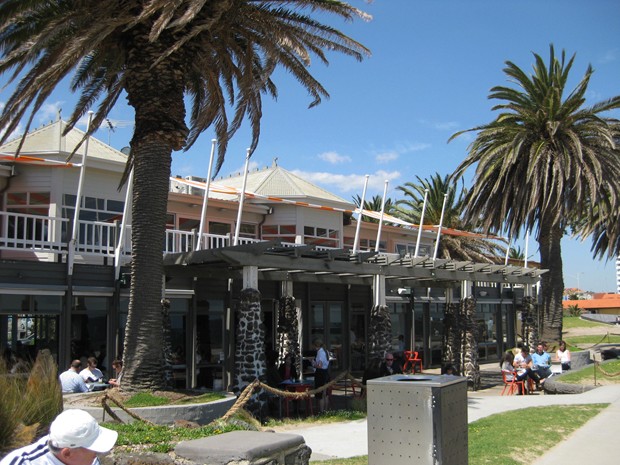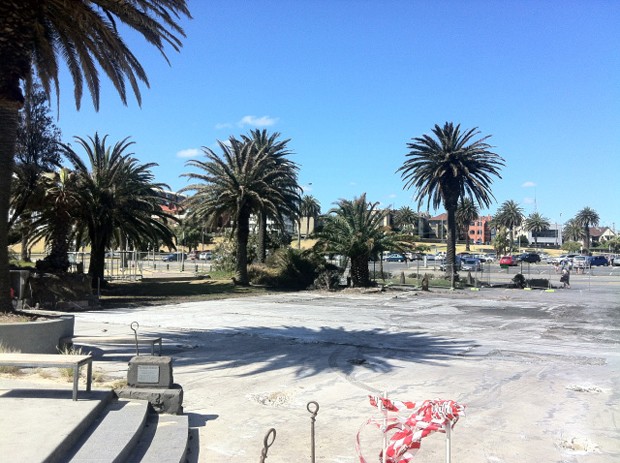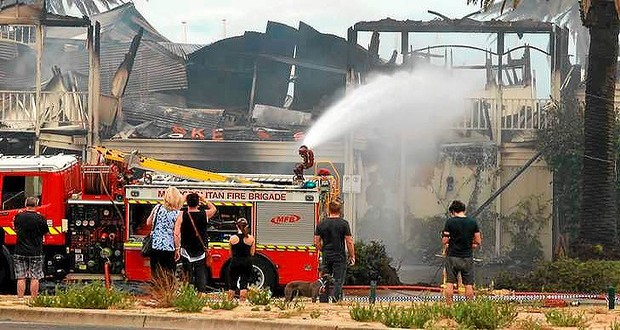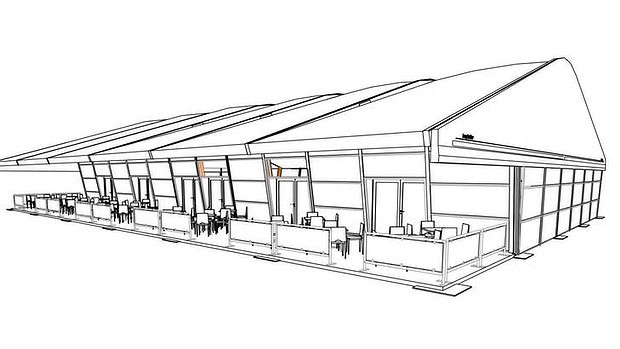Architects are calling on the Melbourne government to hold an architectural competition for the site previously occupied by the Stokehouse Restaurant, a high-profile restaurant on St Kilda’s foreshore which was burnt down after a blaze broke out in the kitchen on January 17.
While there were fortunately no casualties, all eyes are now focused on the site and what to do with it.
The original structure resided on crown land, and was constructed in the early 1900s. The building was not listed on the heritage register.
The Stokehouse, run by the Van Haandel Group, operated on the site for over 20 years. After the fire, the Victorian government fast-tracked the approval of a temporary ‘pop-up’ restaurant, which Stokehouse owner Frank Van Haandel says will open by February 7 and last 10 weeks.
But, what next?
Former Port Phillip mayor Dick Gross has said he hopes a replica of the building will be built, as happened when the St Kilda pier kiosk, which had stood at the end of the pier since 1904, was razed to the ground in 2003.

The former Stokehouse restaurant was burnt down after a fire started in the kitchen and quickly spread to the second floor. Image: The Age

The site of the recently destroyed Stokehouse restaurant. Image: The Red and Black Architect
On the other hand, architect Ivan Rijavec of Rijavec Architecture tells The Age that the Stokehouse building “was never of any intrinsic architectural value” and rebuilding it would only be giving in to nostalgia.
Instead, he suggests that an architectural competition should be held to decide on the site.
This idea is supported by Rosemary Ross who, on behalf of The Directors of ArchiTeam, a members organisation representing over 440 architectural practices, wrote to the Wyndham Weekly saying despite being a great restaurant, the Stokehouse “was not a great building”.
Advocating for a well-designed, high-quality addition to the waterfront, Ross says an architectural competition, which worked for Flinders Street Station, the Sydney Opera House and Federation Square, would produce great results for Melbourne.
“The loss of the Stokehouse represents a fabulous and rare opportunity to hold an architectural competition, which allows a variety of proposals to be put forward, and then judged,” she notes.
“This is a project of an approachable scale, on a critical site on Melbourne’s waterfront.”

Empty site surrounded by palm trees. Image: The Red and Black Architect
Weighing both options in an insightful blog post, co-director of Melbourne practice Atelier Red + Black Michael Smith points towards a document which was developed to assist with making ethical choices about Australia's built heritage, the Burra Charter.
The Burra Charter states:

Smith argues that based on this document, in the specific case of the Stokehouse, although there is clear social value, these memories seem to be more in response to the experience of the people, food and atmosphere rather than the building itself.
He writes,
“I have no doubt that those most familiar with the building will still have a strong attachment to the materiality of the place as it used to be. I would also argue however that these people are a small group likely limited to the staff and very frequent patrons, rather than the community at large.
“Even if I am wrong and the community at large does have a strong emotional attachment to the building that was, an assessment must be made to determine if there is sufficient documentation to reconstruct the Stokehouse. Further to that, decisions will need to be made as to what year it should be modelled off as the building experienced had many changes over its lifespan.”

The aftermath of the Stokehouse fire. Photo: Ken Irwin. Source: The Age
Smith goes on to discuss the pros and cons of a design competition. While a competition has merit in generating many possibilities for the site, he questions if this process would fully capture the soul of the previous experience, whilst taking advantage of all the new opportunities a rebuild offers.
In lieu of a design competition, he says that a more conventional architectural design process should ensue, with experienced architects given the time to investigate the site and assess the requirements of the Stokehouse and wider community, before providing a considered response.
Regardless, any action – be it a design competition or a conventional process; a contemporary building or a replica of the historical one – must be in the best interest of the community.
Read Michael Smith’s full post here.

What the temporary Stokehouse restaurant will look like. Image: The Age

